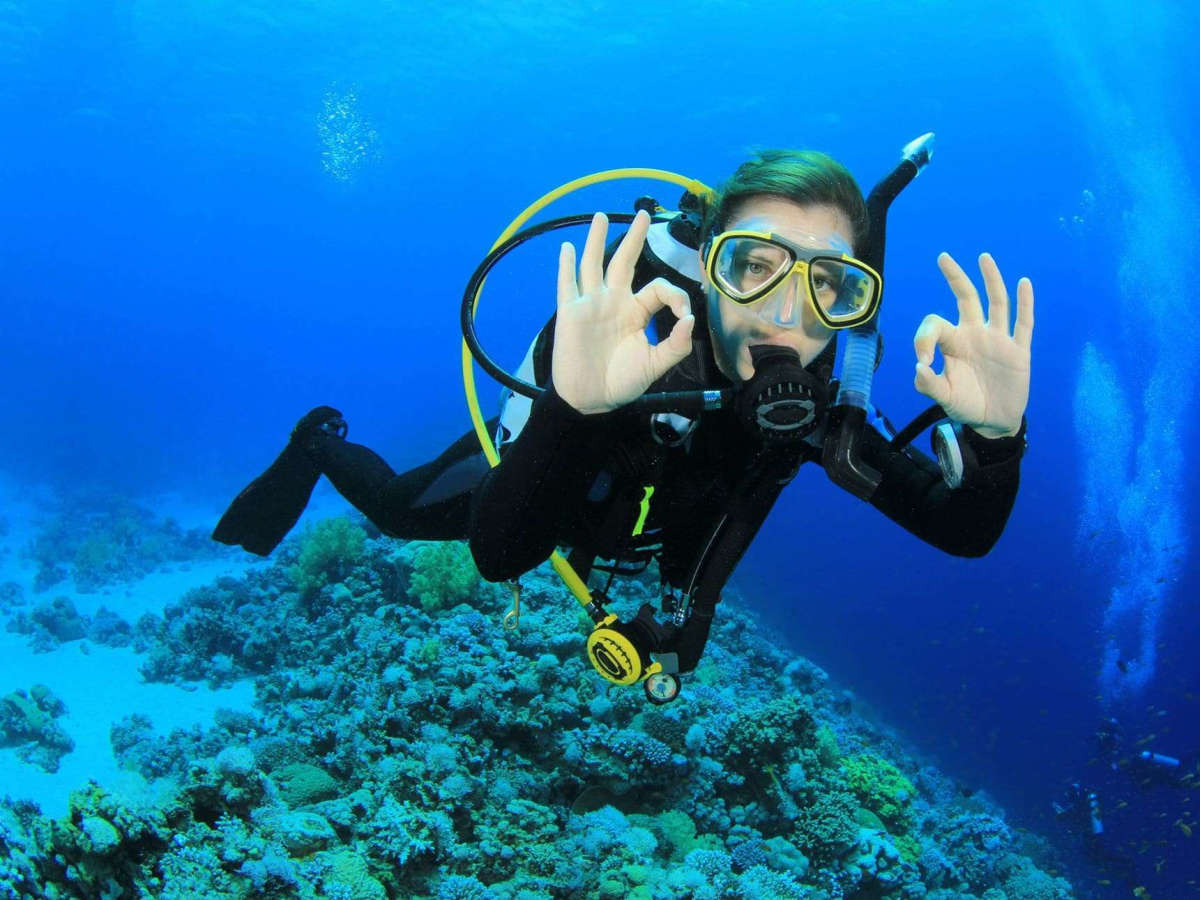Gokarna Beneath the Waves: Scuba Diving Adventures Await


When people think of Gokarna, visions of golden beaches, temple spires, and quiet coastal charm often spring to mind. Yet beneath the gentle waves of this serene Karnataka town lies another world entirely—a vibrant underwater realm that has been captivating scuba divers and marine enthusiasts alike. Over the past decade, Gokarna has quietly emerged as a promising scuba diving destination on India’s western coastline, offering an experience that’s as thrilling as it is tranquil.
Why Scuba Diving in Gokarna is Gaining Popularity
While Goa traditionally steals the limelight for water sports, Gokarna’s scuba diving scene has begun to attract attention for its relatively untouched marine life and less crowded waters. A report from the Karnataka Tourism Department highlights a growing interest in coastal adventure tourism, with scuba diving ranking high among activities that draw both domestic and international travellers. This trend is reflected in the increasing number of certified dive operators setting up shop along Gokarna’s coast.
One of the key appeals of Gokarna diving is its sense of discovery. Many dive sites remain largely unexplored compared to popular hubs like Netrani Island near Murudeshwar. This gives divers a chance to witness pristine coral formations, diverse fish species, and even the occasional turtle or moray eel gliding silently through the reefs.
What Awaits You Beneath Gokarna’s Waters
Marine Biodiversity:
Gokarna’s waters belong to the Arabian Sea, known for hosting a mosaic of marine life. Divers frequently spot butterflyfish, parrotfish, angelfish, and schools of snappers weaving through coral bommies. On certain dives, lucky adventurers might even catch glimpses of cuttlefish, octopuses, or graceful rays resting on sandy seabeds.
According to a marine biodiversity survey conducted by the National Institute of Oceanography (NIO), the coastal waters off Gokarna are part of a critical habitat for several reef species, indicating the region’s importance for conservation as well as tourism.
Dive Conditions:
Visibility around Gokarna generally ranges from 5 to 20 metres, depending on the season. The optimal time for diving runs from October to March, when the seas are calm, and underwater visibility peaks. Water temperatures hover between 26°C and 29°C, offering comfortable conditions for extended dives.
Dive Sites to Explore:
While Gokarna’s underwater maps are still evolving, several dive sites have started gaining recognition:
Half Moon Reef: A shallow reef near Half Moon Beach with flourishing coral colonies and colourful reef fish.
Paradise Reef: Slightly deeper, this site hosts fascinating rock formations where marine creatures find shelter.
Light House Reef: An emerging site, featuring soft corals and good macro life for photography enthusiasts.
Each site offers its own character—some ideal for beginners, others better suited for more experienced divers looking for depth and adventure.
Training and Dive Operators
Travellers new to scuba diving need not worry about experience levels. Several PADI- and SSI-certified operators offer beginner courses such as Discover Scuba Diving (DSD) and Open Water Diver certifications. These sessions often include theory briefings, shallow-water practice, and supervised dives in the sea.
Reputable dive centres in Gokarna emphasize safety and environmental responsibility, encouraging divers to respect marine ecosystems and avoid disturbing delicate coral structures. Many operators also participate in ocean clean-up drives, reflecting a growing awareness of sustainable tourism practices.
Gokarna: More than Just a Dive Destination
One of the unique draws of diving in Gokarna is the ability to blend ocean adventure with cultural exploration. After a morning underwater, visitors can stroll through the town’s vibrant streets, visit the iconic Mahabaleshwar Temple, or relax on secluded beaches like Om and Kudle. This fusion of natural beauty and spiritual heritage gives Gokarna a character unlike any other coastal town in India.
Moreover, the town’s atmosphere remains relatively laid-back compared to bustling tourist centres. For divers seeking serenity both above and below the waves, Gokarna delivers a refreshingly unhurried experience.
Practical Tips for Scuba Diving in Gokarna
Best Time to Dive: October to March, for calm seas and good visibility.
Getting There: The nearest airport is Dabolim Airport in Goa (approx. 140 km). Gokarna is well-connected by road and train.
Health & Safety: Always dive with licensed operators, declare any medical conditions upfront, and avoid diving immediately after long road or train journeys if fatigued.
Responsible Diving: A Shared Responsibility
As more travellers discover Gokarna’s underwater beauty, preserving these marine ecosystems becomes crucial. The United Nations Environment Programme (UNEP) emphasizes that responsible diving practices—such as avoiding contact with marine life, refraining from touching corals, and minimizing plastic use—are essential to ensure sustainable tourism growth.
Gokarna’s appeal lies not only in the life beneath its waves but in the opportunity to witness it responsibly, leaving minimal impact for future generations of divers and marine creatures alike.
Final Thoughts
Gokarna may be a modest dot on India’s coastal map, but beneath its azure waters lies a world that’s anything but ordinary. Whether you’re a seasoned diver chasing new dive logs or a curious first-timer eager for a glimpse into the deep, Gokarna offers a scuba diving experience that blends adventure, serenity, and natural splendour.
Leave a comment